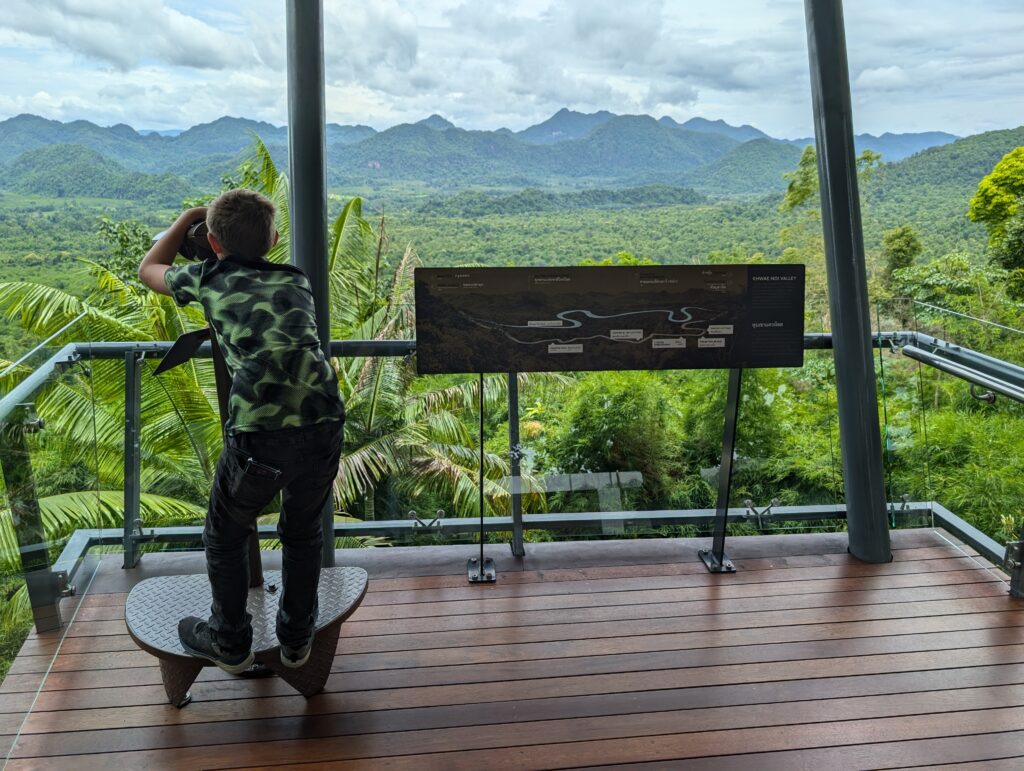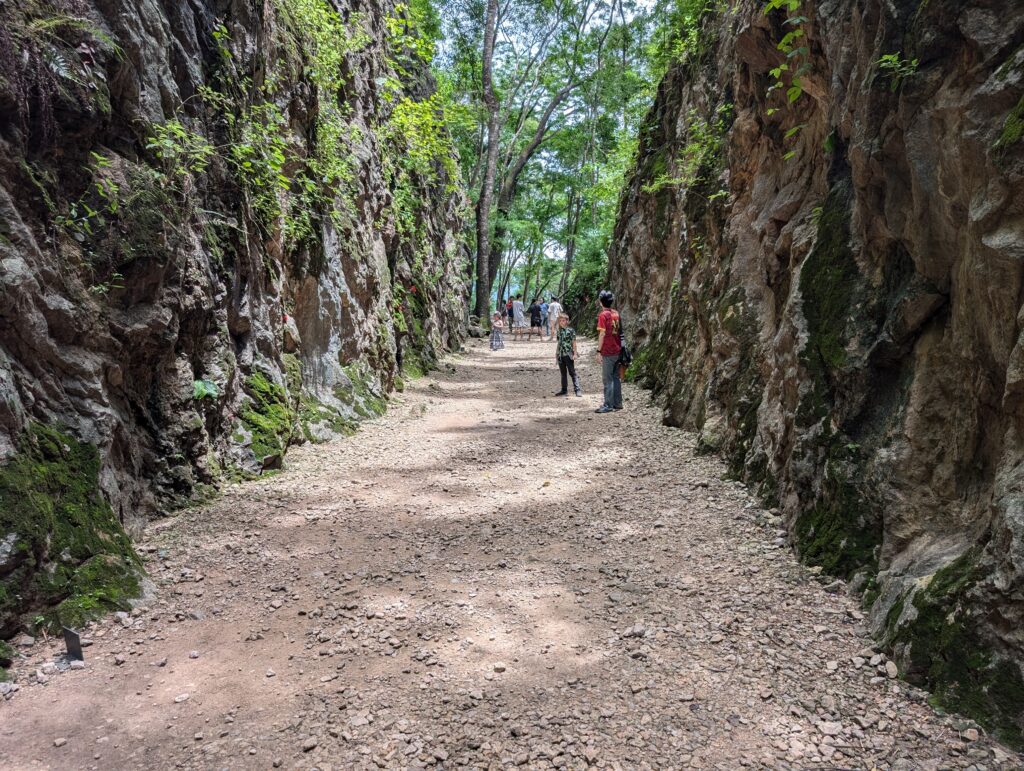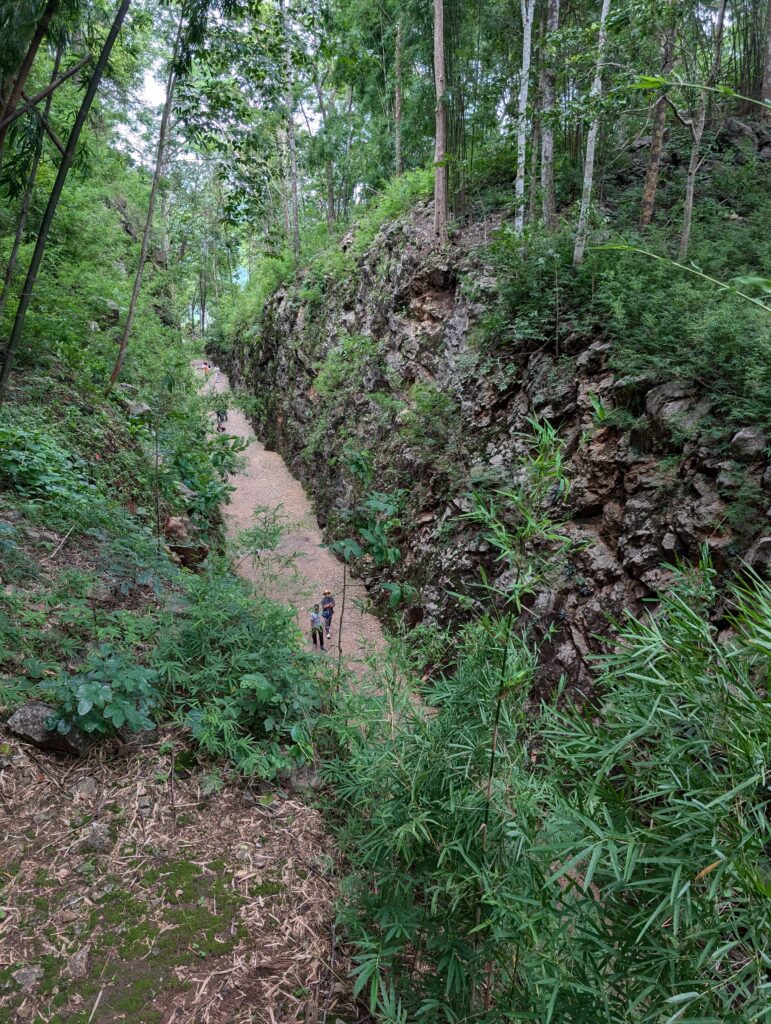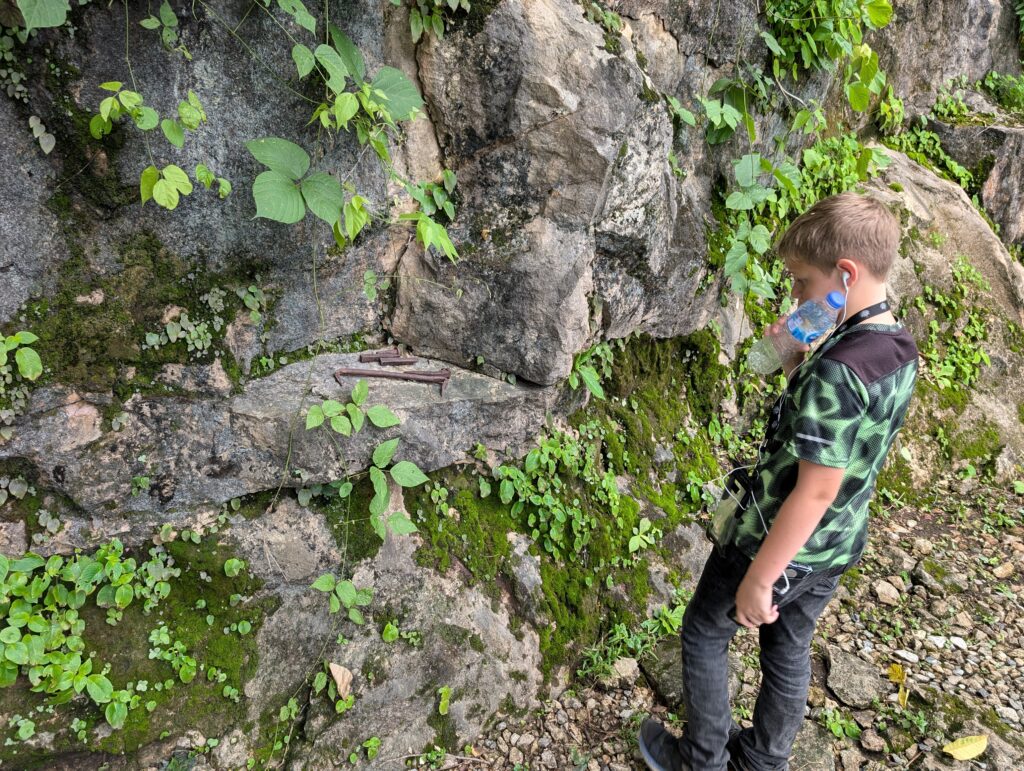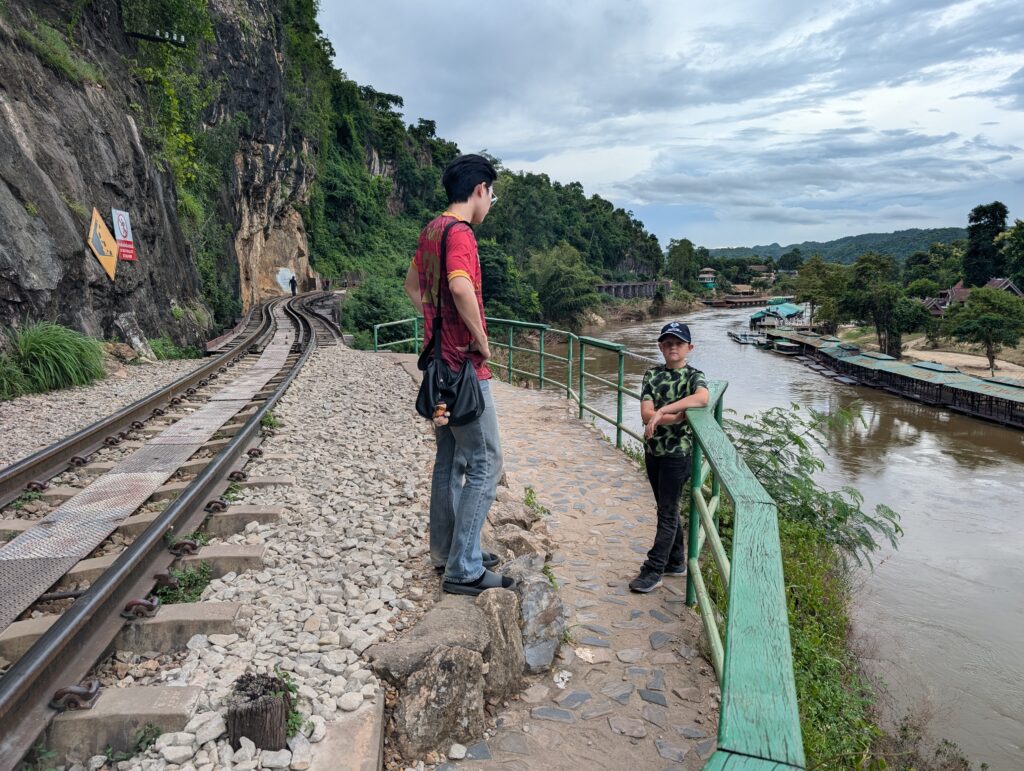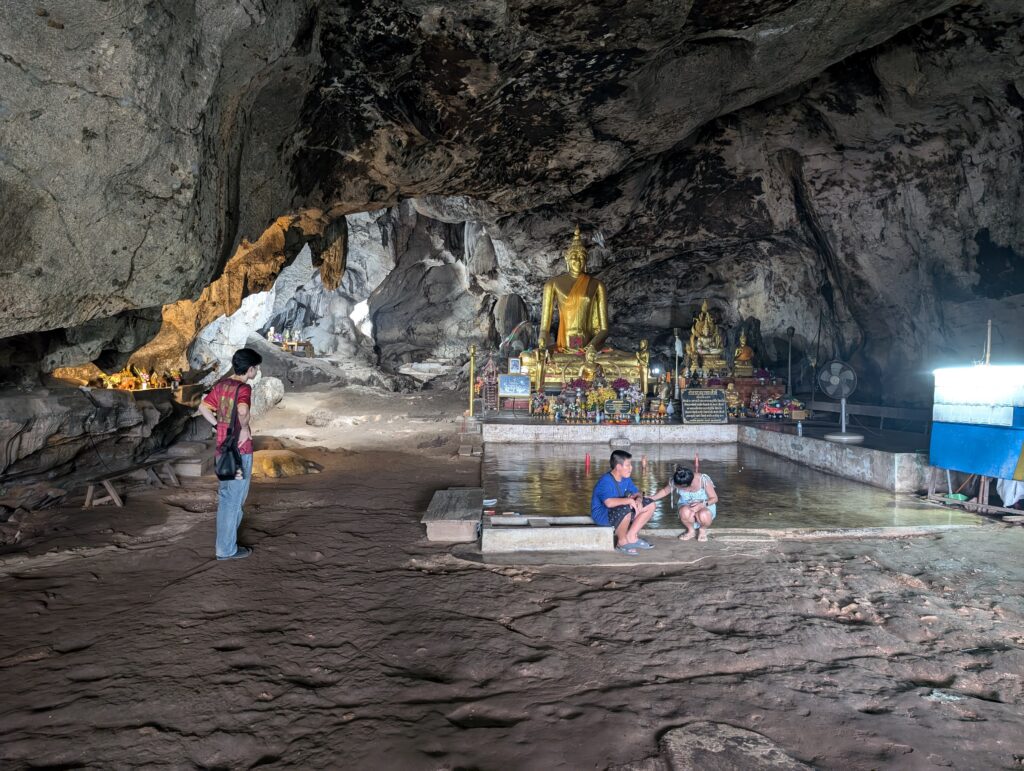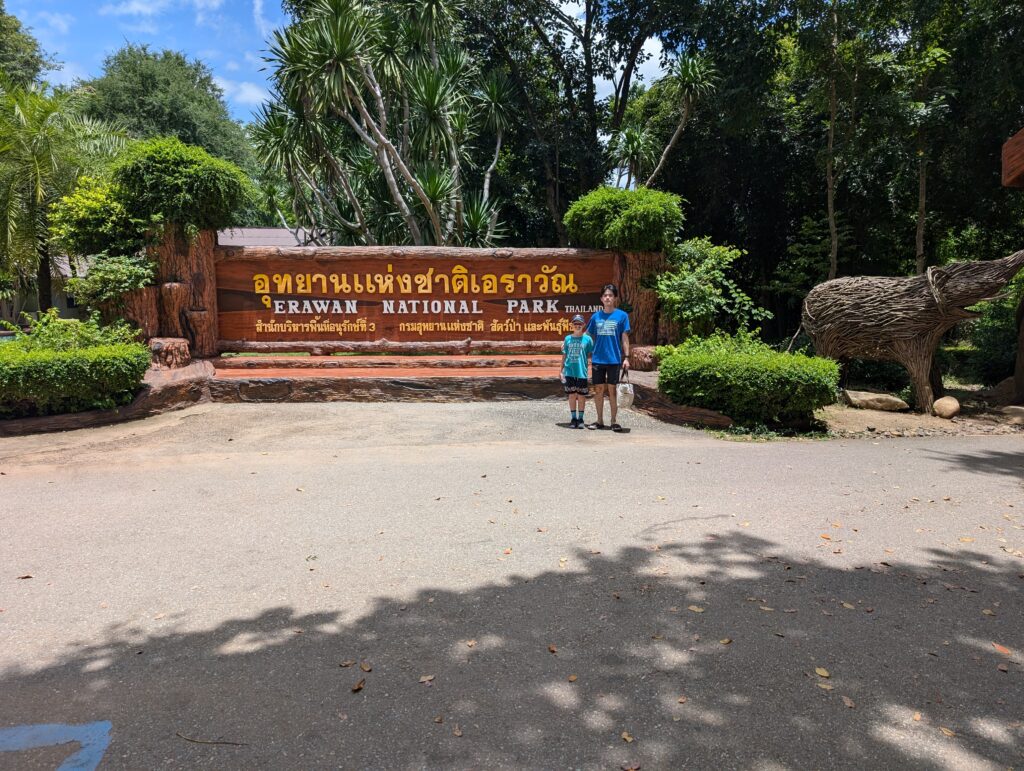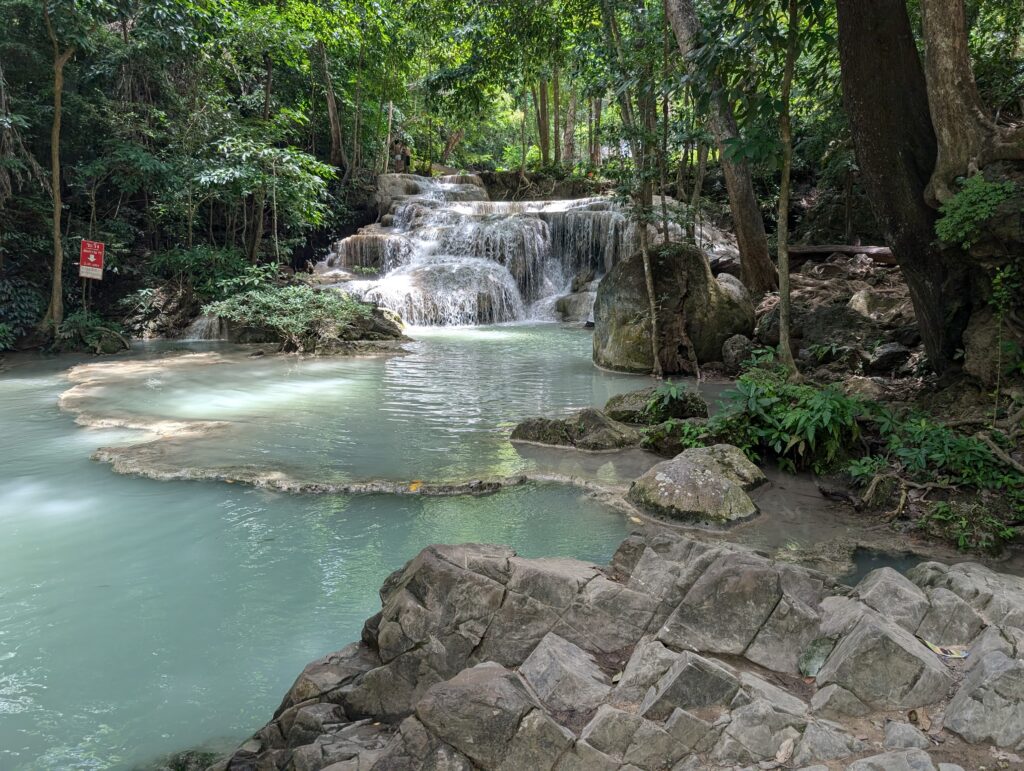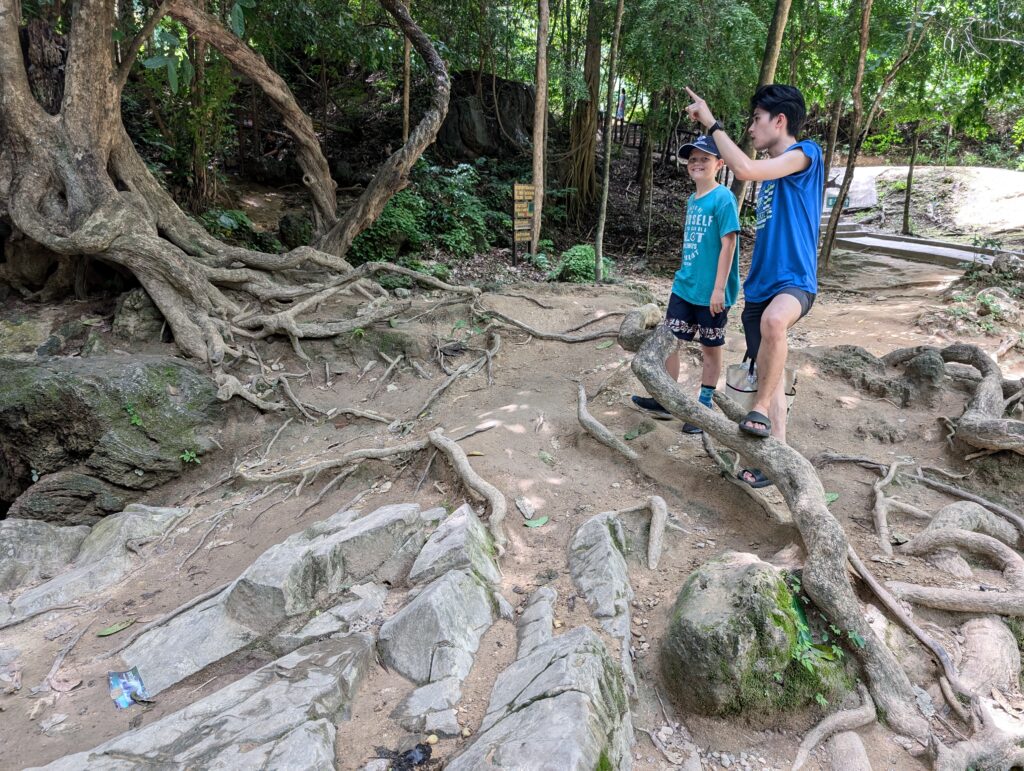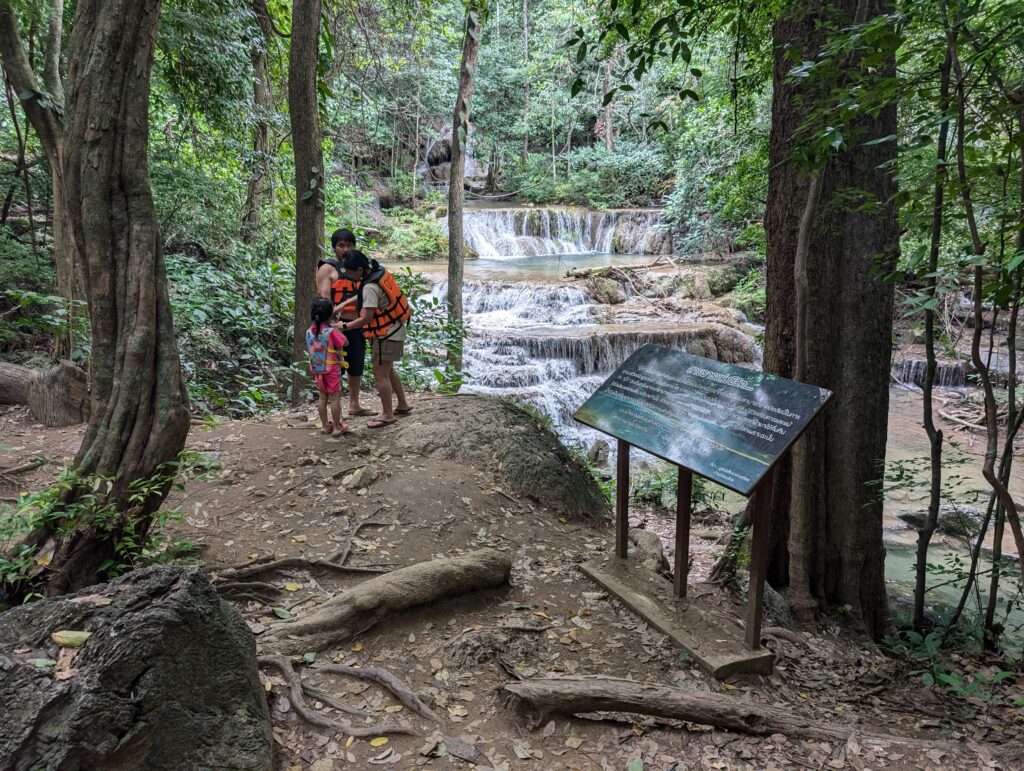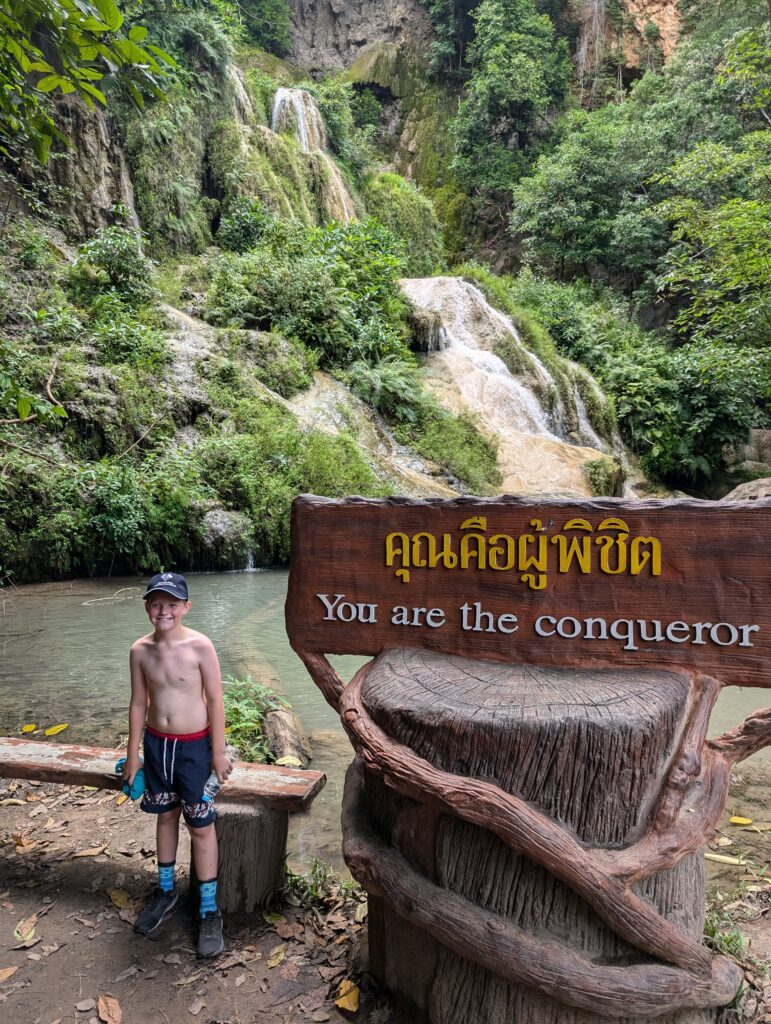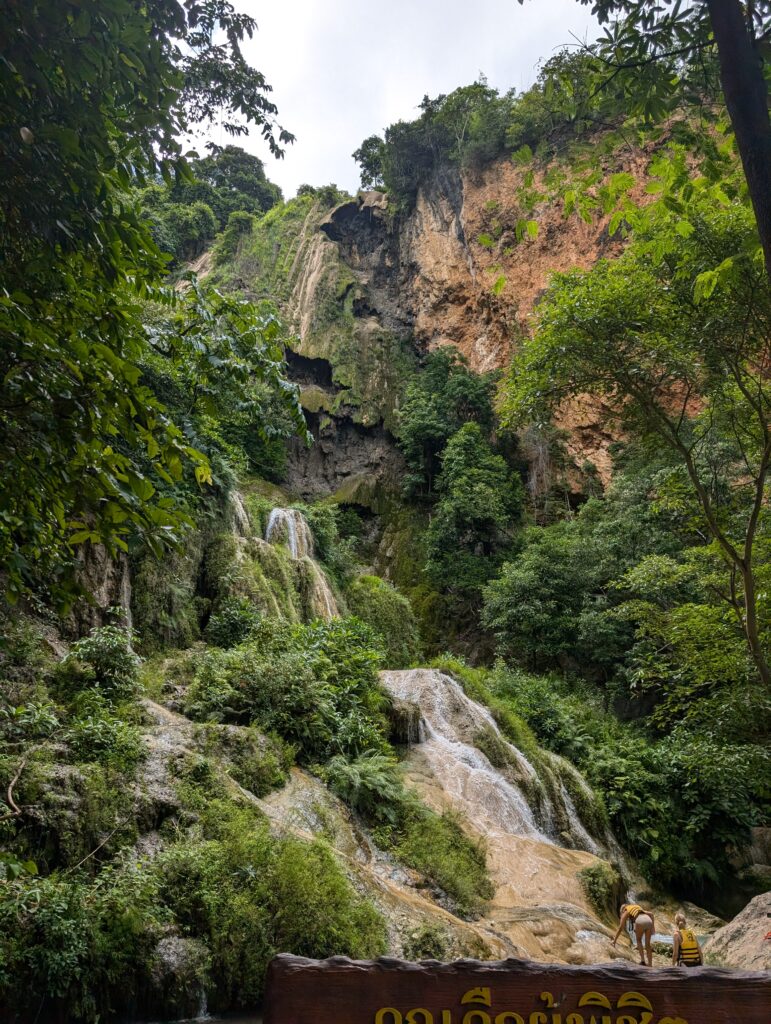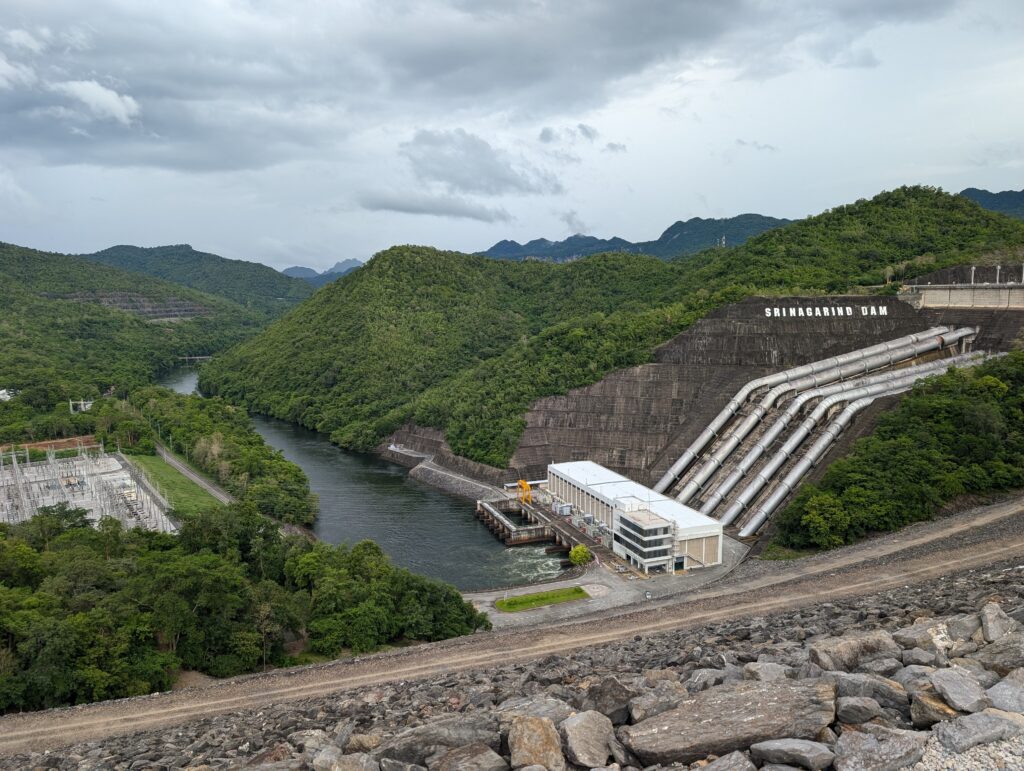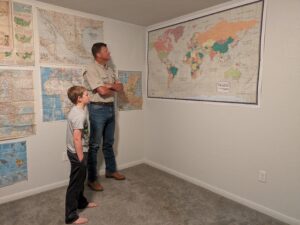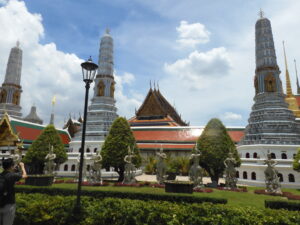Kanchanaburi
Family Hospitality on Another Level
Suebsak Macharoenrungrueang went by “Vun” (pronounced “woon”) when he attended school in Spur during the 2020-2021 school year. Foreign exchange students with names Americans would find difficult to pronounce often adopt Americanized monikers to fit in better and make communication easier with classmates and teachers. I usually oppose this practice. A name is a very personal thing, and I want to learn how to say a kid’s name correctly, rather than just calling them “Bob” or something. When I heard track and field announcers try to say Macharoenrungrueang, Vun seemed like the better option. He went by Vun at home in Thailand, too, so that made me feel better.
Vun faced many obstacles during his academic year in America. His placement agency just about gave up trying to place students in the wake of Covid. Texas was probably the only place he could have come. A second agency picked up Vun’s pool of applicants late and were looking for an emergency placement for him. We have enjoyed hosting exchange students, and invited him to join us, late though it was.
I felt bad for him. Like many East Asian students, he was shy and a bit introverted. He has since told me that this is born of a major cultural difference. He had to sort of adopt an American outgoing persona to help him function in our society. This may be a bit more common that we think. He spoke very little English when he arrived. I felt like the company that endorsed his ability to complete schoolwork in English had done him a disservice. He spent hours at night in his room translating all of his assignments both ways. He was an extremely hard worker. He also was still completing work from his Thai school. All of that translating was exhausting. Functioning in a second language is mentally exhausting, even if you have a moderate understanding. Part of the reason Vun spent so much time alone in his room initially was that he just needed a break from thinking and interacting in English.
Often he did not understand Stephanie’s guidance or questions. He nodded yes, even when he didn’t understand, in an attempt to be compliant. This only exacerbated the situation. We were never angry at him for this, but it made basic things like preparing for school or church or even just dinner a bit difficult. We felt love and sympathy for this poor, kind, extremely polite young man who seemed to be in over his head as an exchange student.
Vun’s English improved while he was in America, but communication was still difficult on the day he returned to Thailand. Immersion is generally the most effective language learning approach, but Vun did not let his return home become a barrier to continued improvement. His language skills have improved exponentially as he continued to study. He is now completely fluent, though some Americans might have modest difficulty with his accent.
Vun is navigating life very well. He is making his way through Assumption University, a prestigious institution in Thailand that even educates some members of the royal family. Vun’s extended family runs a large fertilizer sales and distribution company in Kanchanaburi. Most of the extended family members live at this facility. Upon arrival, we were welcomed in just like family. The cultural imperative to show hospitality was almost overwhelming. Someone from the family – usually Vun – was assigned to guide us to different tourist locations each day. We were fed more than we could have ever eaten, showered with gifts, and provided with rides and a very nice place to stay the entire time we were there. It was difficult to escape to other parts of Thailand without a family escort.
(Continued)

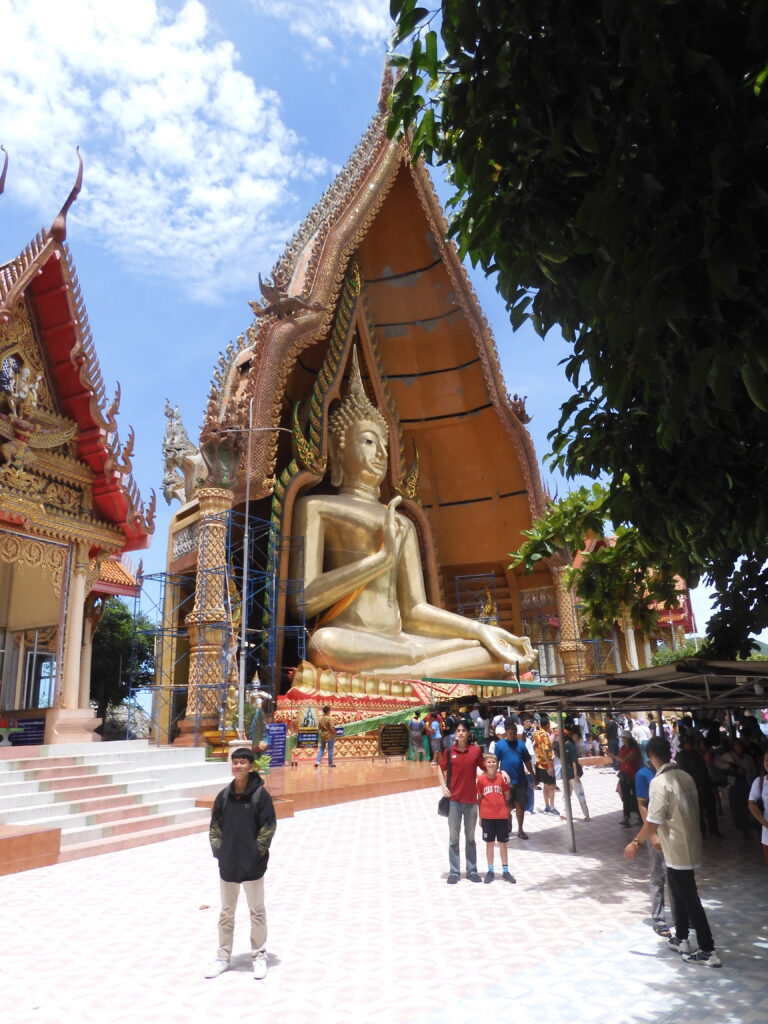
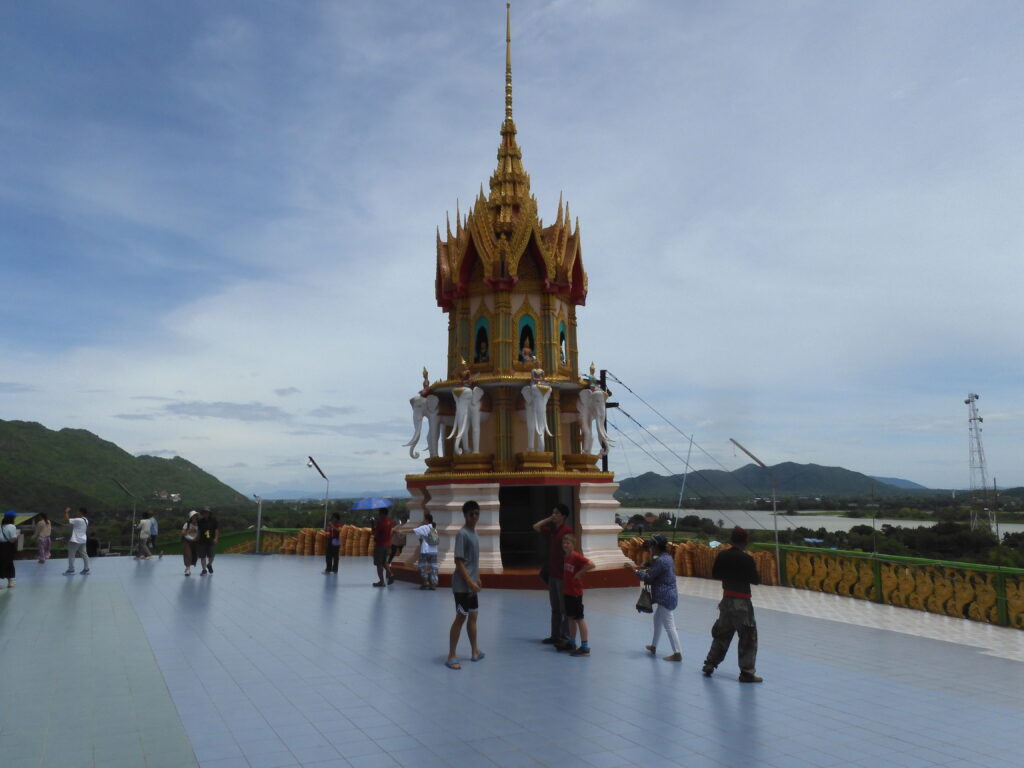
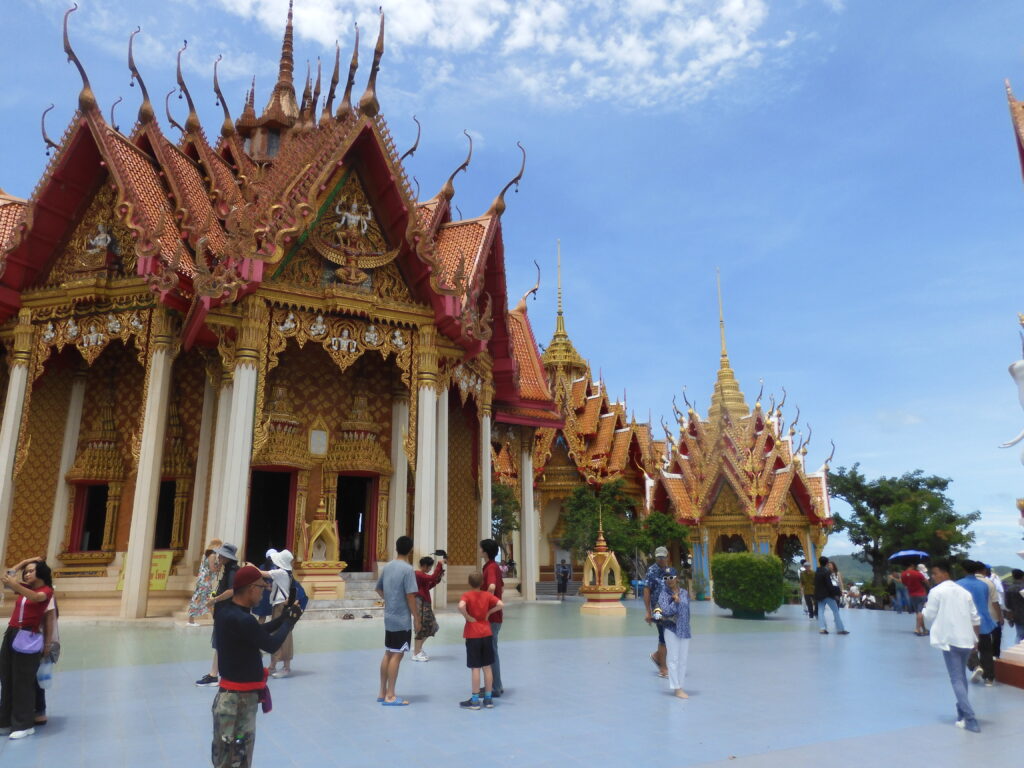
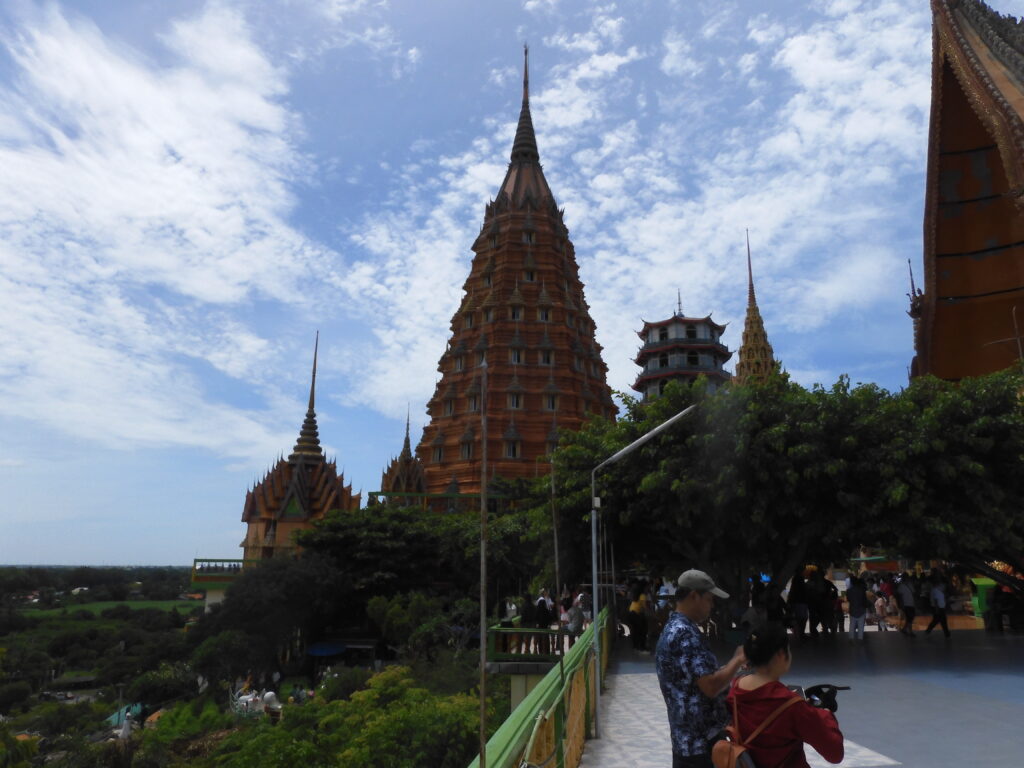
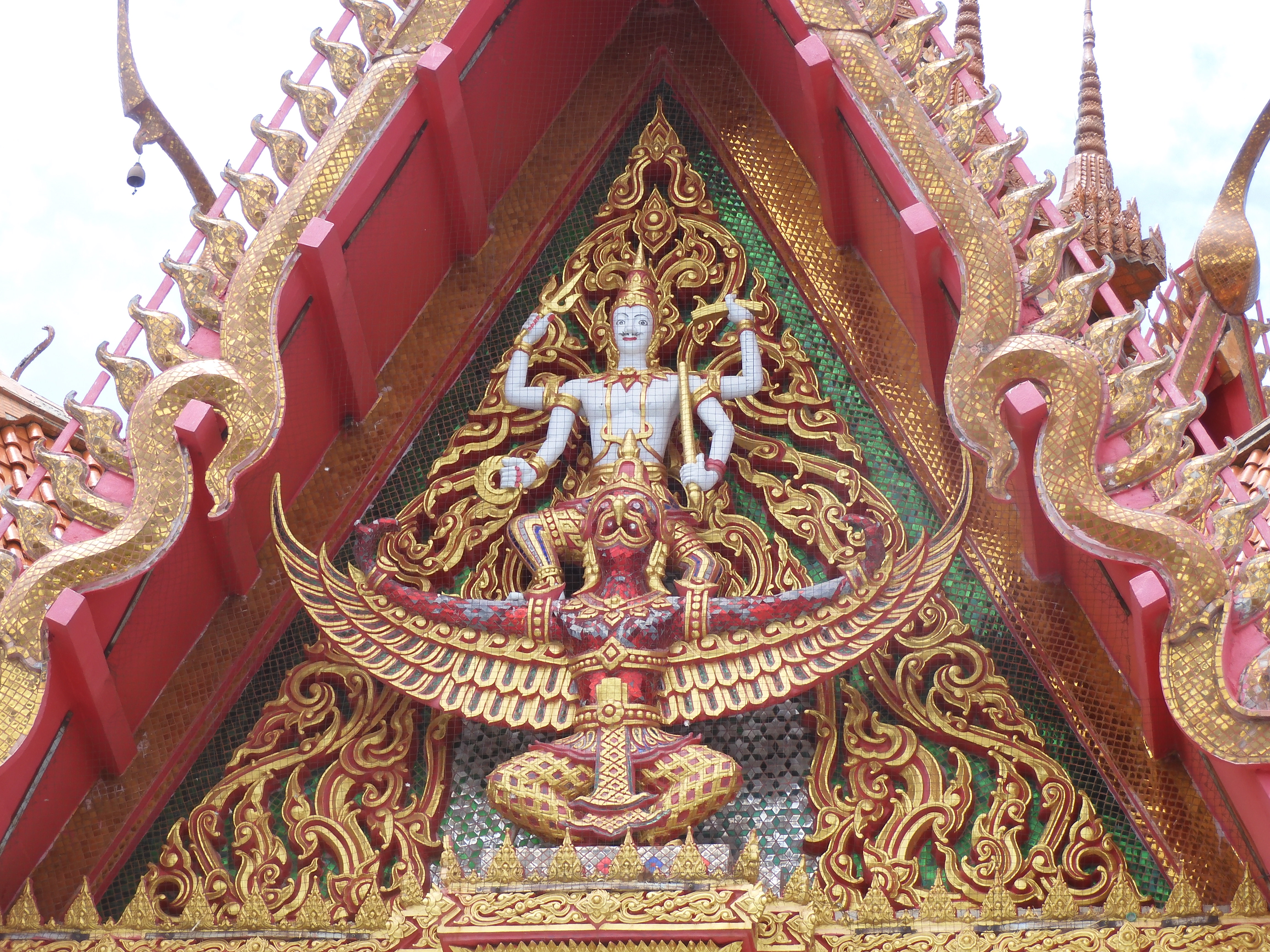

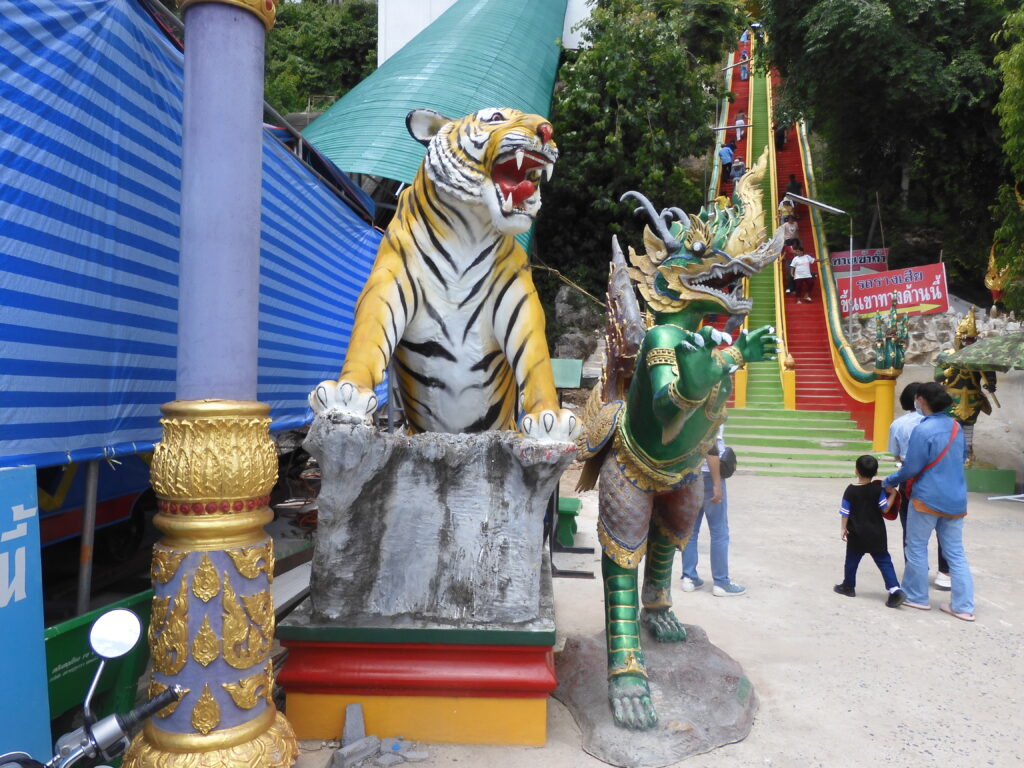

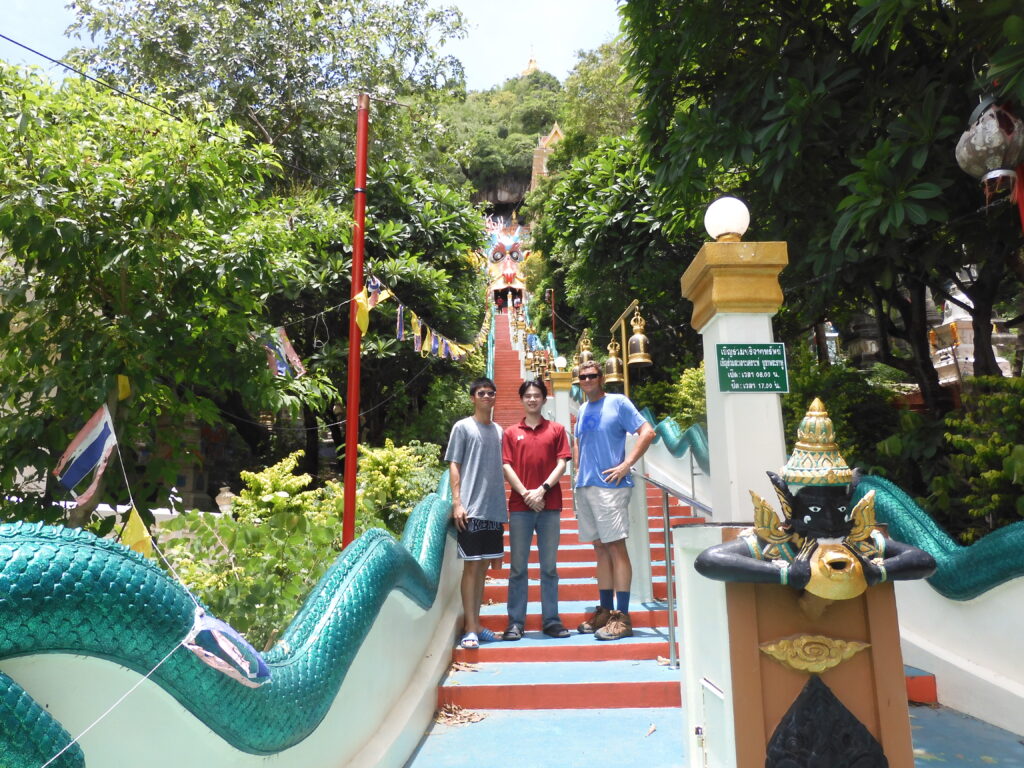
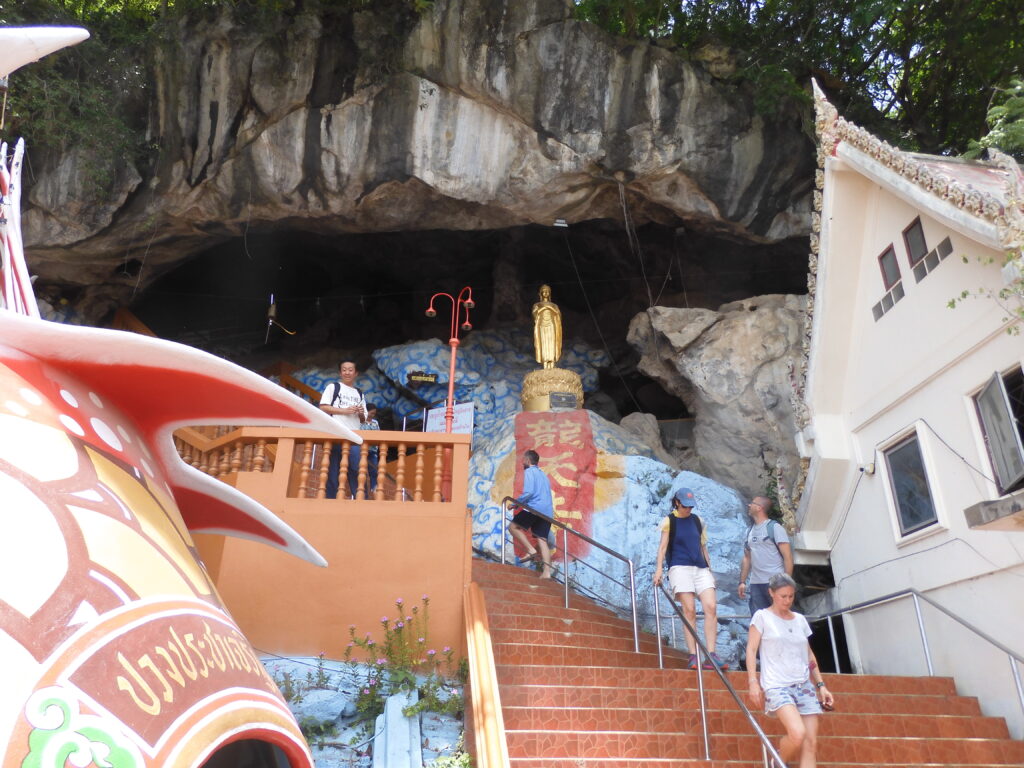
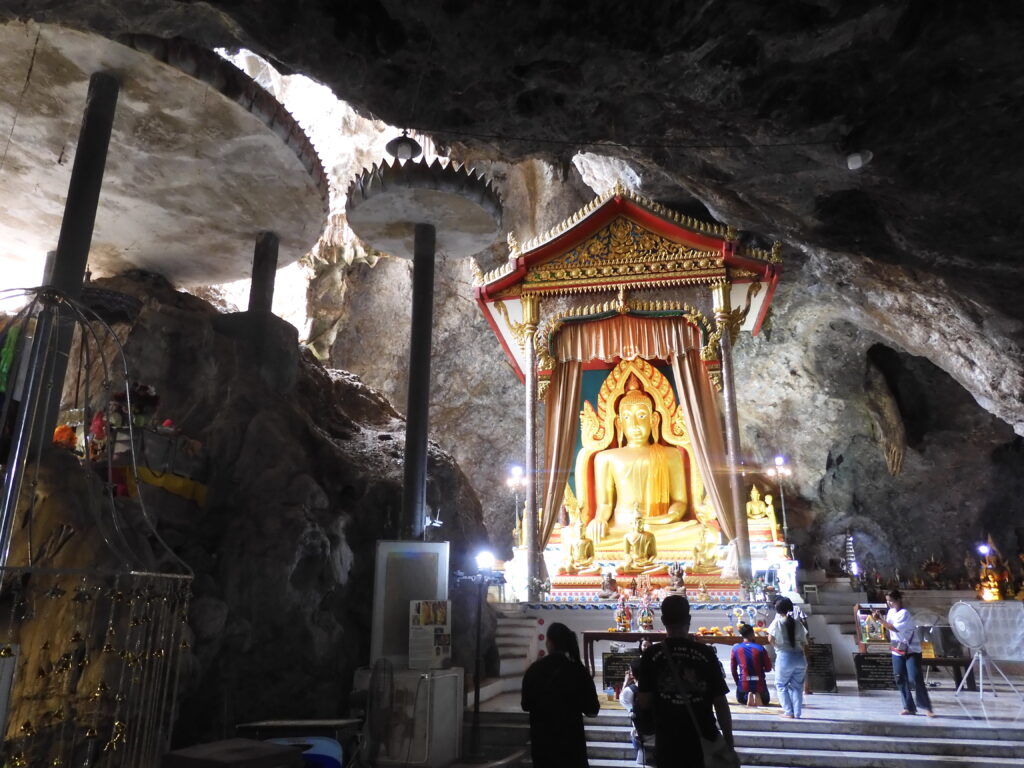
When I say extended family, I mean extended. Vun’s grandfather and great uncle live on site, as do several aunts and uncles and so many cousins that they wear red shirts numbered one through fifteen so they can be more easily differentiated. Many of these children are a little shy, too, but most eventually warmed up to us, playing bingo or riding hoverboards.
Every day began with a meal. On our first day we visited a Buddhist temple themed after tigers. A different temple had a Buddha statue in a cave. You had to climb up through the mouth and throat of a dragon to get to the cave. There are differences in Buddhism as practiced in Thailand compared to Nepal. It is a synchretistic affair on the whole. Parts are borrowed and shared with Hinduism and other religions. In fact, Buddhism as a whole often seems like a philosophy as much as a religion. The Buddhists we saw offering incense at shrines were doing so for good luck or to ask for a personal favor rather than as an act of worship. The Buddha himself insisted that he was not a god. Nevertheless, the temples are impressive and do contain worship regalia. The temples we saw around Kanchanaburi were of the Thai style influenced by China, with multiple arched roofs, red coloring with gold plating, gold tongues of fire, dragons, eagles, and stylized animals of other types.
We visited two main temple complexes. We went first to Wat Thum Sua (Tiger Cave Temple) and Wat Tham Khao Noi. Khao Noi is a Chinese style temple with less gold, but a larger piece of architecture. The more ornate buildings were on the Thum Sua side, highlighted by a sixty foot Buddha statue and a colorful set of stairs somewhat akin to the steep, uneven path you must take to exit the Spur High School football stadium. The ones in Kanchanaburi are far more brightly colored. There was even a monk inside one section either giving lessons or offering blessings, I wasn’t sure which. The entire setting is perched upon a hill with beautiful views of the surrounding rice fields and the distant ridgeline.
Our second temple stop was Wat Ban Tham, or Dragon Head Temple, so named for the huge dragon’s head you must climb up to and walk through en route to a cave which houses the principal Buddha image. All of these facilities have multiple minor chedi (dome-like worship structures – also known as stupas). Wat Ban Tham also included another shrine high above the cave, atop the hill. Caleb gave us so much grief climbing this second set of steps on the way to the dragon’s head that we knew there was no way we were dragging him to the top of the hill. We saw the highlights of the facility, then continued on our Vun-led tour of the major sites around Kanchanaburi.
That afternoon, we visited two sites associated with the “death railway.” During World War 2, Japanese forces in Burma became somewhat isolated from other Japanese land units as the Japanese fleet became more and more depleted in the wake of the Battle of Midway. They lost so many carriers, they could not protect shipping headed around the Malay Peninsula to Burma. There was no effective overland route, so the Japanese decided to force allied P.O.W.s and conscripted Asian workers (romusha) to build one, and quick. Thousands of workers died of overwork and infectious jungle diseases, exacerbated by malnutrition. A part of this construction was fictionalized to make the movie, “Bridge on the River Kwai.” We visited one of the cemeteries, and walked across the bridge.
Our day concluded with a massive meal where we eventually had to turn bowls upside down on the tops of our plates to prevent more food from arriving. We played with the children, and I answered all sorts of questions about fertilizer, agriculture, American politics, world politics, and many other subjects. It was a wonderful day, and just an introduction to the hospitality we would be shown by Vun’s family at Kanchanaburi.
(Continued)
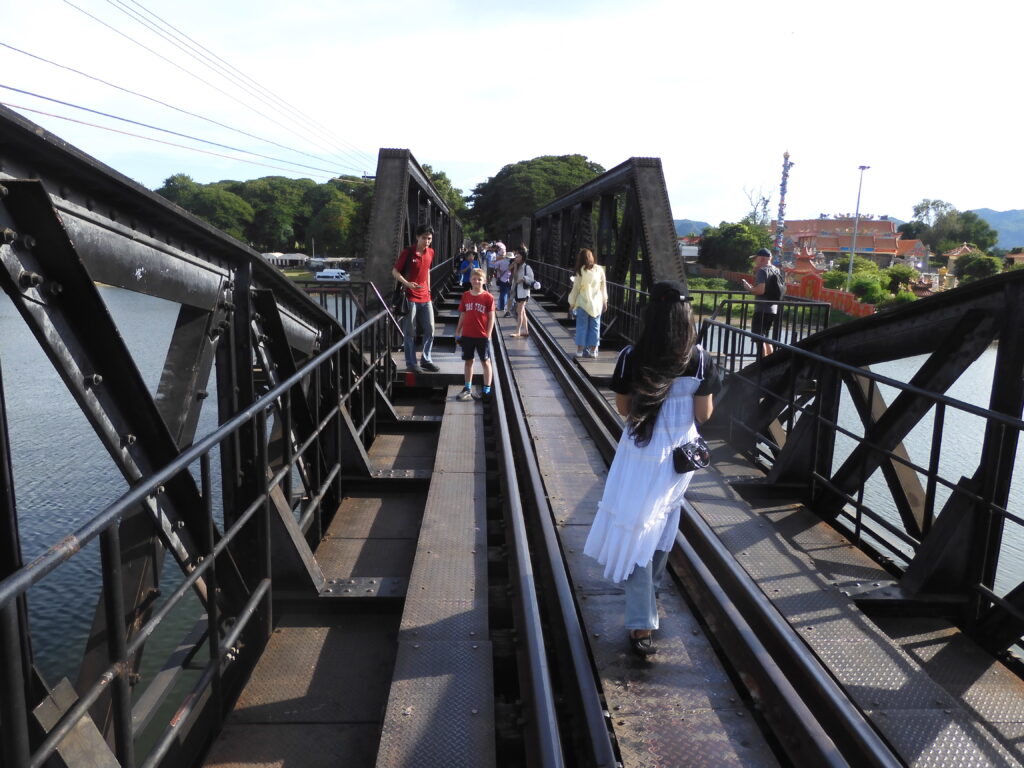
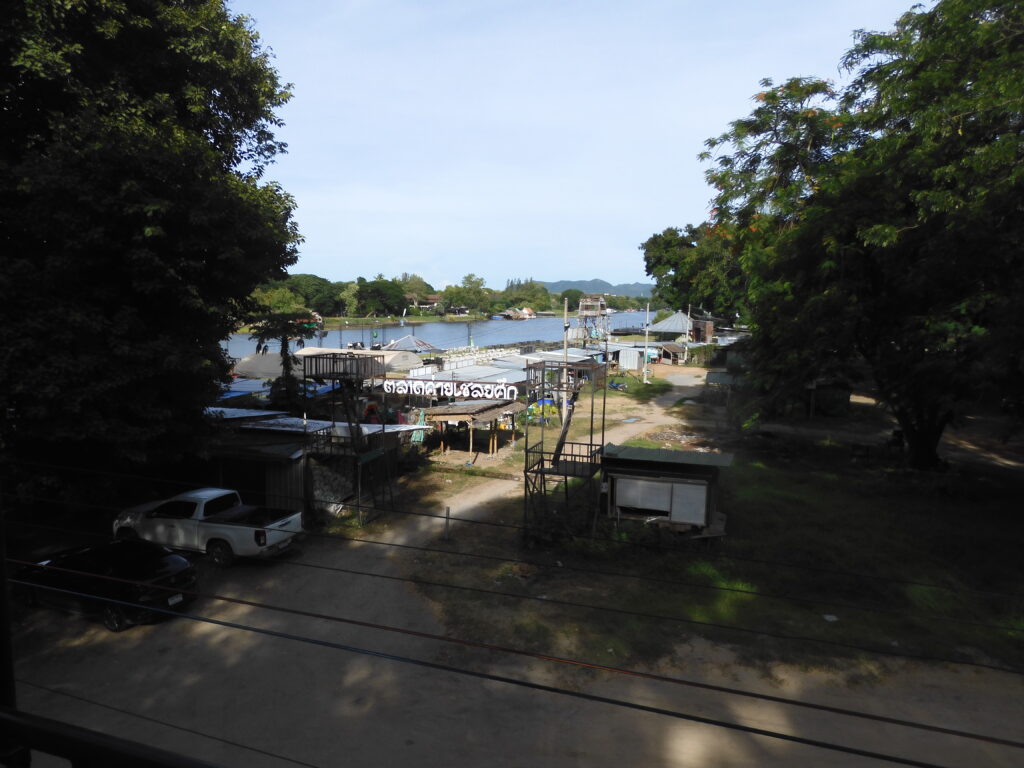
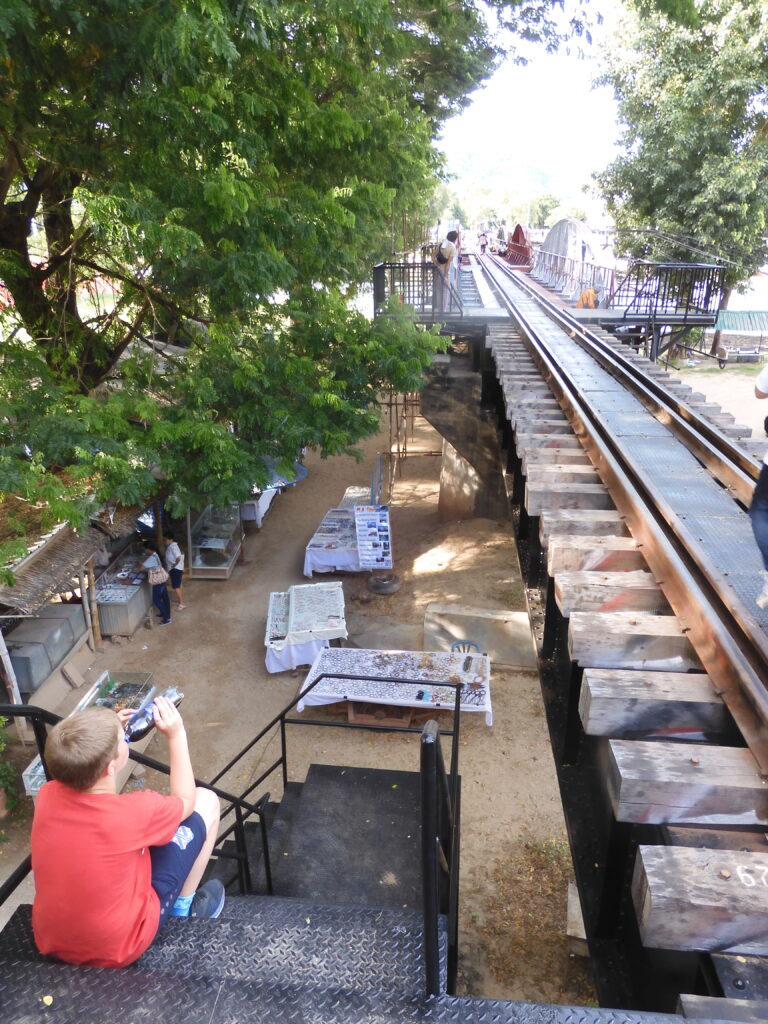
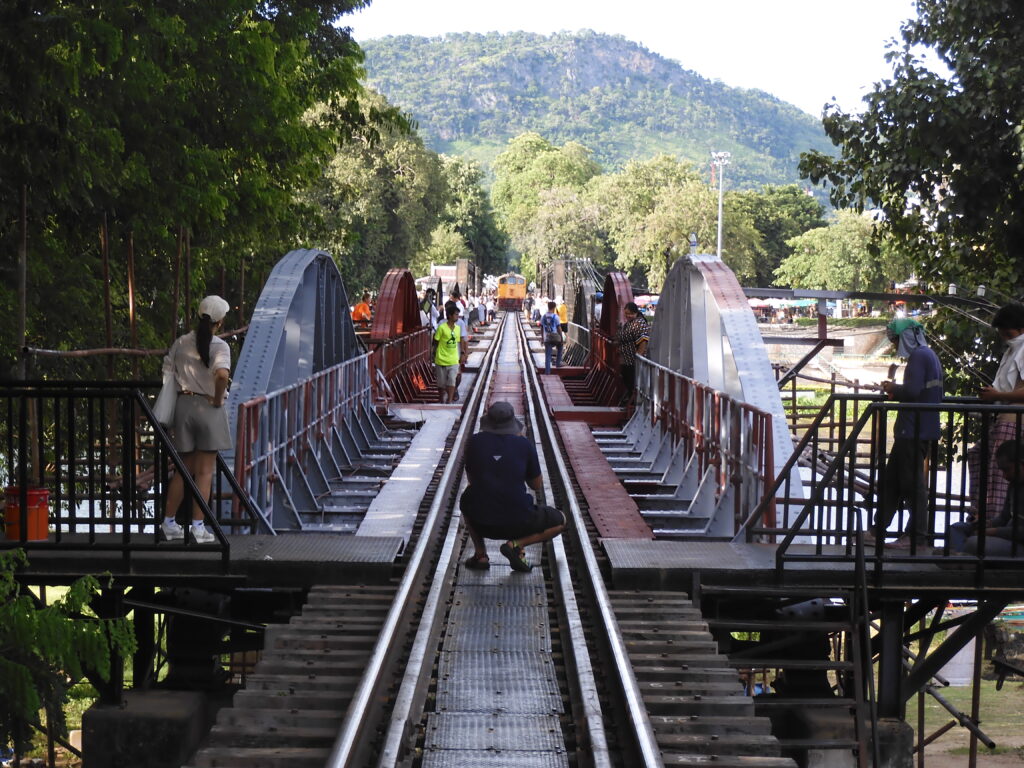
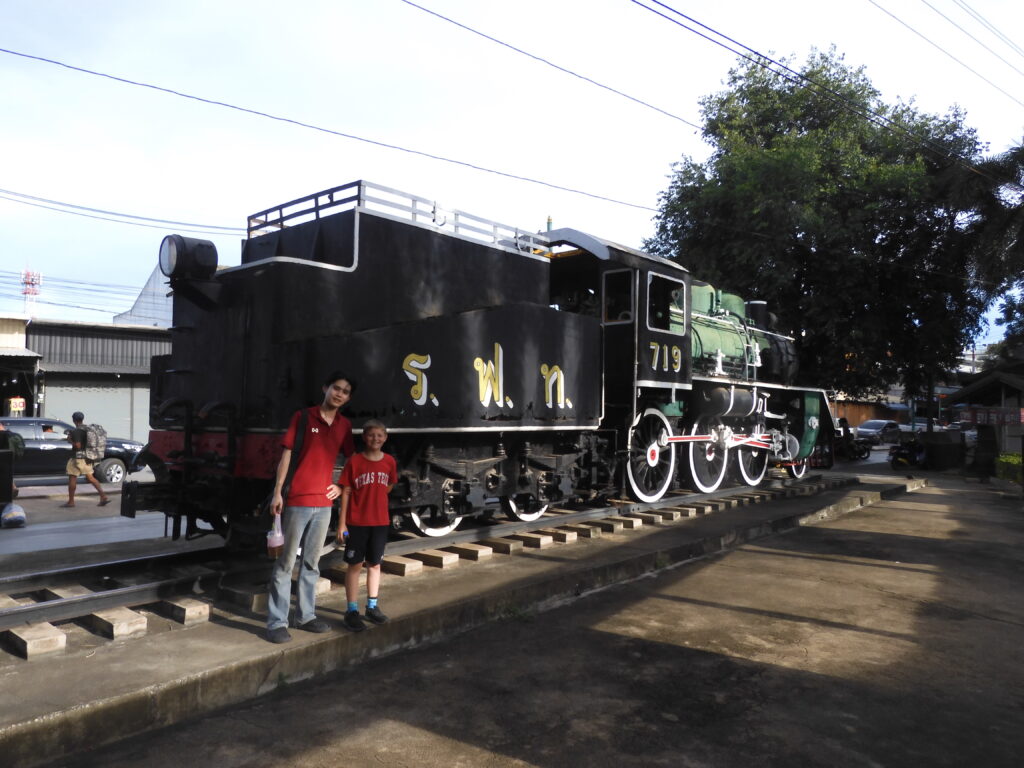
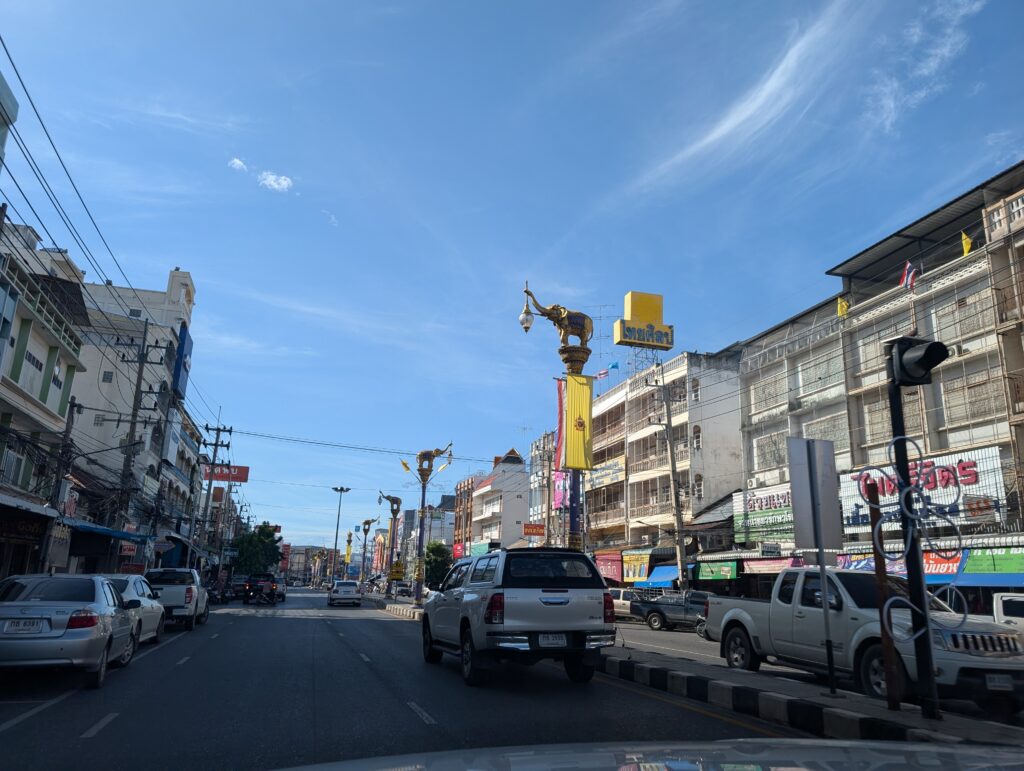

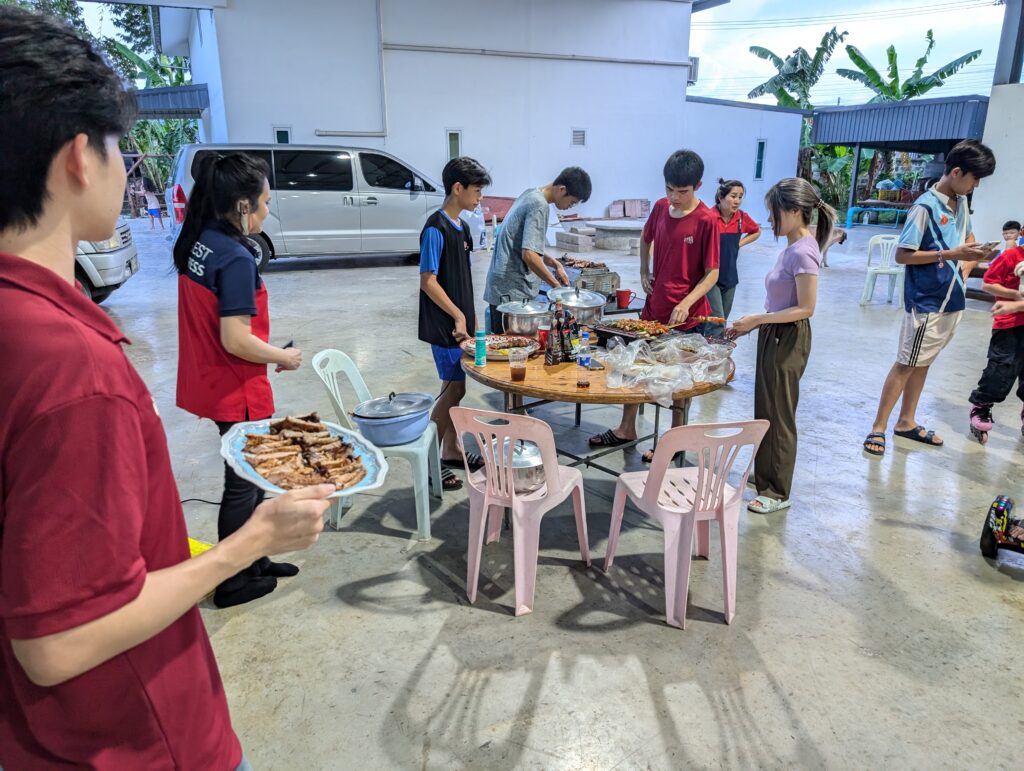
The next morning, we headed out to a museum where a major cut had been made on the Thailand-Burma railway. You can walk through the cut, in the footsteps of the men who suffered through the wet, bamboo-sliced, hungry conditions. We hiked as much of this as Caleb would tolerate. We saw another wooden railway bridge and another small cave with a Buddhist shrine in it. I started to work on a few Thai words which I tried on Vun’s cousins as well as the local monks who I sometimes passed in the road as I ran each morning.
The traffic was not busy around Kanchanaburi. Vun’s family actually lives just outside a small rural community near the larger town. We were surrounded by palm trees, sugar cane fields, corn, and cassava. Motorcycles with makeshift side cars designed for cargo scurried around. Sometimes a person rode in the cargo sidecar. It was peaceful and it made me reluctant to head back to the city. We did want to see more of Thailand, however.
Before we left Kanchanaburi, we spent a night near Erawan National Park. Erawan means elephant. The elephant is the national animal of Thailand. Some towns have elephant light posts in the medians. Kanchanaburi’s light poles had fishes, their regional symbolic animal. Erawan national park is a hike-able set of seven waterfalls. You can drive up to the base, but you must walk from one small set of falls to the next. Obviously, this also involves some climbing. We made it to the top level, where we discovered once again that they had doctor fish. This time, some of them were over a foot long. I wasn’t sure I wanted them nibbling on my feet. Staying close to the falls helped keep them a way a little bit due to the movement of the water. Caleb saw a pair of Belgian girls reluctant to offer their feet to the fish. He scurried around in front of them, shooing the fish away while they worked their way toward the falls. Eventually, it began to rain and we made our way back toward the fertilizer compound. We had a nice farewell supper and planned to have Vun drop us off in Bangkok the next day.
By the time we ate breakfast, packed our bags, said our goodbyes and met one other branch of Vun’s family, it was well into the afternoon. Bangkok rush hour traffic set in before we got to the city. We introduced Vun to Billy Joel as we crept through the traffic. Vun is quite a music lover. He enjoys being introduced to American acts. He has very diverse tastes, and will listen to anything from Frank Sinatra to Beyonce. We spent at least two hours listening through the collective works of Billy Joel while crawling our way to Sukhumvit, which would be our home for the next five days.
